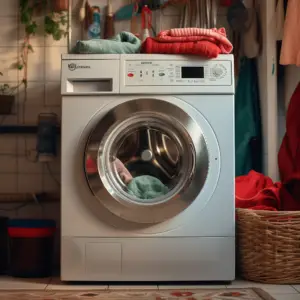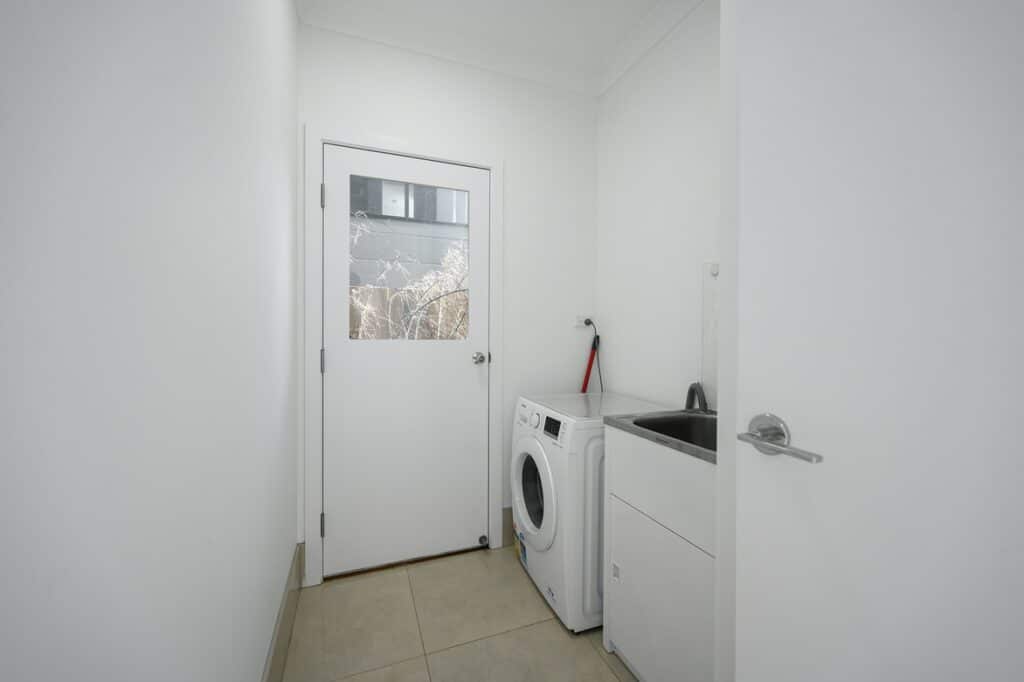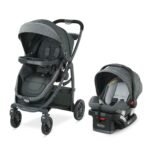Squeaky Dryers, Identifying the cause of a squeaky dryer is often more difficult and time-consuming than working on the actual repair. If your dryer is squeaking loudly and you’re unable to use it due to the irritating noise, and fear it might fall apart, here are some suggestions that might help.
Depending on the make and model, a dryer squeaking may be caused by a worn tub support roller, worn belt idler pulley glides or felt worn out, worn blower squirrel mount bearings, or worn drive motor bearings, or something else related to the drum.
The good news is that most of these parts are relatively inexpensive and easy to replace.
Table of Contents
Why Does My Dryer Squeak Until It Warms Up? Things to Look at

Below is a more detailed explanation of the possible causes as well as the parts to check if your dryer is making a squealing noise or is squeaking loudly.
Drum Glides
The glides are responsible for providing support at the open front end of the drum and enabling it to turn smoothly against the front cabinet. Depending on the type used, worn glides may squeal, clang or grind during performances.
There are various styles of glides but the most common ones are strips of adhesive felt with plastic or nylon pads, detachable plastic cowlings, or metal brackets with a felt and nylon pads.
A perfect sign that you may need to replace the glides is brown flecks or spots from dried and deteriorating felt.
Drum Bearings
The rear support shaft and drum bearing are used to provide support to the rear of the drum. Different manufacturers employ a variety of components; nylon, plastic, metal, spindle and sleeve, ball bearings, ball and socket, bushings, or sometimes a combination.
The drum bearing is found at the center rear of the drum; one part attaching to the back of the drum and the other to the support frame at the rear of the cabinet.
Similar to glides, worn drum bearings may squeal, grind or screech. This noise won’t stop until the drum stops turning. Note that the motor may also have issues turning the drum.
Motor
Dryer motors have sealed ball or roller bearings that allow them to operate with minimal friction. Most of them feature a shaft with a pulley that drives a belt that turns the drum. That said, some are direct-drive motors, meaning they spin the drum without the presence of a drive belt.
No matter the type, if the bearings dry out or become worn, they will start to squeak or squeal. The best way to know it is the motor is when it shuts off for a period to cool down and then cycles on. This is because the motor won’t work if the bearing seizes.
Blower Wheel or Fan
This is a plastic, nylon, or metal vamped wheel or impeller that draws air into the dryer where it’s heated. The wheel/fan forces the heated air through the drum and out the vent.
As the dryer motor shaft drives the blower, the blower itself may collect lint or debris over time. This, in turn, can cause wear or damage to the fan, and lead to a thump or squeaking noise.
Drum Support Rollers
Even though a dryer is supported at the front with drum glides and the back with the drum bearing, the main weight is often cradled by four drum support rollers. These rollers work like rubber wheels with a bearing at the center. A shaft or bolt goes through the bearing and secures it to a bracket.
Squeaky Dryers the rubber or the bearings wears, the support rollers may begin to squeak continuously or intermittently as the dryer heats up or with heavier loads.
Drive Belt
The drive belt is a long narrow flat rubber that goes around the exterior of the drum cylinder and the motor pulley. When the dryer is turned on, the motor spins the pulley, which rotates the belt and turns the tub.
As a result, if the belt is worn, it may make a thumping or whooshing sound as the frayed sections hit or feather the drum. The belt will also squeak if it is slipping at the pulley.
Felt Seal
The work of the felt seal is to wrap the edge of the rear of the drum cylinder as well as the front on some models. It wraps the seams where the ends of the cylinder meet the top and bottom of the drum.
The felt also cushions the stationery housing and moving piece, preventing abrasions and limiting unheated airflow into the drum.
If the seal dries out and becomes shiny, it causes a squealing dryer when the drum rotates. It may also thump or create a metallic scraping sound if worn through.
Keep in mind that clothes may become snagged in the gap or sustain brown or black streaks where they have rubbed against the unsealed or worn seal edge.
Loose Screws
Loose screws such as those that fall out of pockets may rattle or jingle or cause parts to shift and squeak. Items that become stuck in or fall through the perforations may produce a metallic squeaking or screech noise.
Lifters or Baffles
Lifters or baffles are molded plastic or metallic vanes attached to the inside of the drum. When the drum rotates, they lift and tumble the clothes, enhancing exposure to the heated air.
Some lifters are removable and thus can squeak as they move the clothes. Also, if the load is heavy, the tumbling between baffles may cause the drum to slip within the drive belt, making a squeaking sound.
Motor Idler Wheel or Pulley

The motor idler pulley is a plastic, nylon, or metal wheel on a spring-loaded mounting that offers tension to the drive belt. The wheel also features a bearing that allows it to spin with limited friction.
If the pulley or bearing is worn, it may produce a squealing sound, which may become a scraping noise over time. So you might want to replace it.
Unbalanced Leg
A dryer can squeak due to an uneven leg. Over time, the dryer can shift out of level, causing it to rock slightly and squeak. So make sure the dryer is level and doesn’t wobble.
Conclusion
A dryer is an important tool in many households. While it can last for decades, it can start to squeak with time due to the above possible causes.
With limited moving parts, diagnosing the cause of the noise is fairly easy. Common repairs include replacing the belt, glides, idler pulley, felt, and drum bearings. However, failure to repair can lead to motor damage, which often means replacing the dryer.


